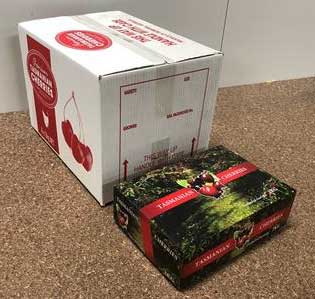Current cherry handling practices of export-focused producers in Australia are consistent with those in Chile and the USA, with a few key points of difference.
Conclusion (continued from last issue)
The vast difference in scale between producers in these countries with those in Tasmania will make much of the current packing technology unviable for many in the state. Modern optical graders will continue replace their mechanical predecessors with this takeover all but complete.
Current cold chain management is acceptable but there is still room for improvement. Cherries should be cooled to a pulp temperature of under 5C as soon as practical, as much shelf life may be lost between harvest and hydrocooling.
The single biggest contributing factor to shelf life is fruit respiration rate, which itself is directly related to storage temperature. Consequently, fruit should be held between -0.5C and 0.5C after packing.
Pitting frequency and severity can differ between seasons and varieties. The cause of this problem, however, is physical impact on the cherry and this becomes more prevalent as cherries are handled at colder temperatures.
FA cooling or in-line hydrocooling represent the only viable methods to further reducing fruit-pulp temperature without noticeably increasing damage to cherries. For FA cooling to be effective, current box designs would need to be modified.
Increasing cherry consumption within Australia can only be achieved through collaboration between growers and retailers to improve presentation of cherries and make for a more enjoyable eating experience for the consumer.
Recommendations
The focus on quality over quantity when exporting into Asian markets has been prevalent for some years. This will almost certainly continue as commodity prices for cherries continue to decrease.
(cont next issue)
See this article in Tree Fruit Sept 2022






















